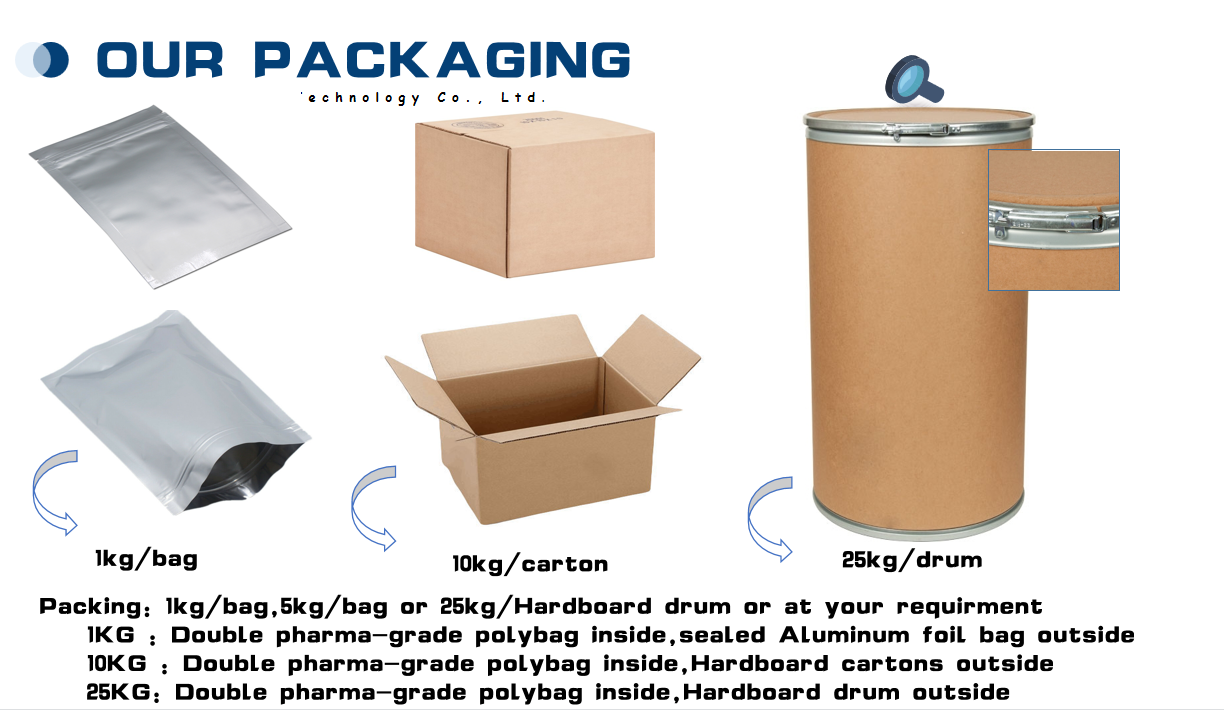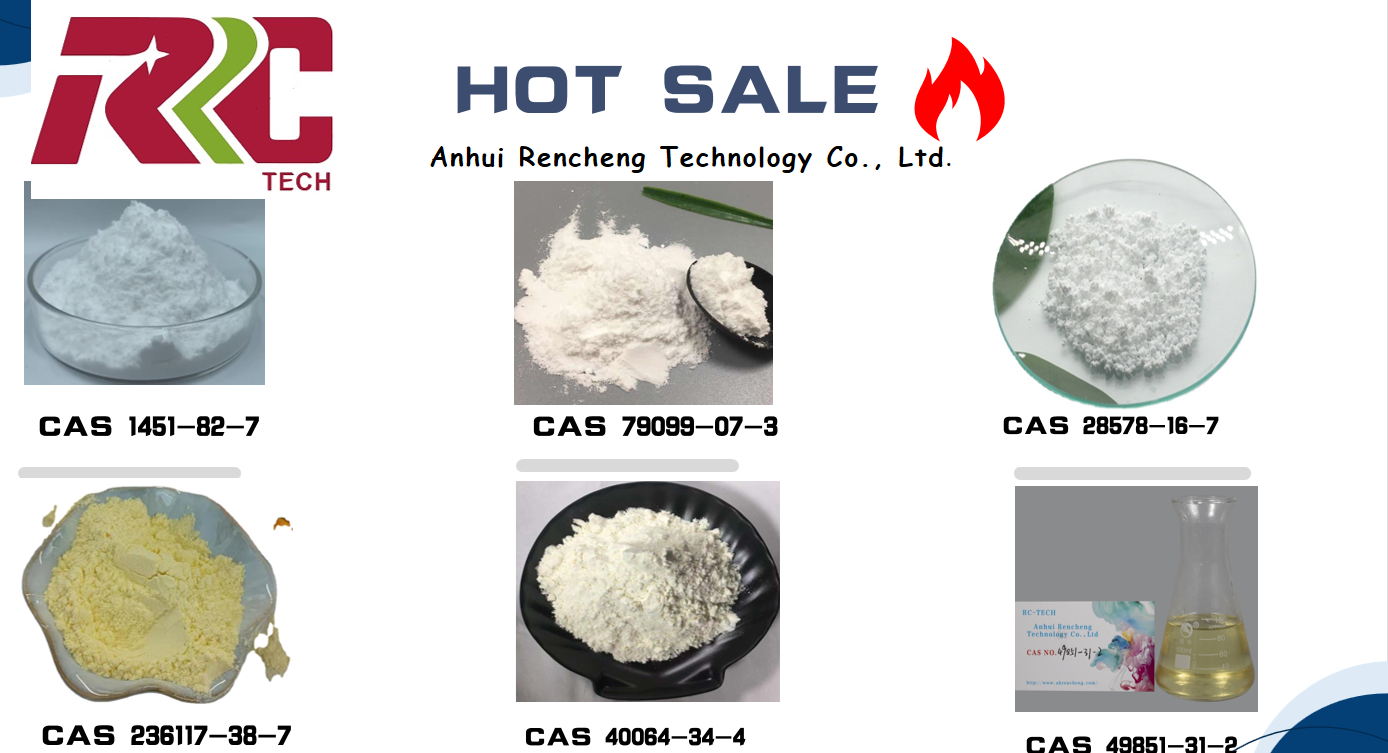Basic Info
| Product name | Ropivacaine HCI |
| CAS No. | 132112-35-7 |
| Molecular Formula | C17H26N2O.ClH.H2O |
| Molecular weight | 328.88 |
| EINECS NO. | 663-286-1 |
| Grade Standard | Medicine Grade |
| Appearance | White or almost white crystalline powder. |
| Purity | 99%min |
| Melting point | 267-269°C |
| Boiling point | 410.2°C at 760mmHg |
| Flash point | 201.9°C |
| Solubility | H2O:soluble |
| Stability | Stable. Combustible. Incompatible with strong oxidizing agents. |
| Storage condition | 2-8ºC |
| Shelf life | 2 years |
Function
1. Ropivacaine is an anesthetic (numbing medicine) that blocks the nerve impulses that send pain signals to your brain. 2. Ropivacaine is used as a local (in only one area) anesthesia for a spinal block, also called an epidural. The medication is used to provide anesthesia during a surgery or C-section, or to ease labor pains. 3. Ropivacaine is a local anaesthetic drug belonging to the amino amide group. The name ropivacaine refers to both the racemate and the marketed S-enantiomer. 4. Ropivacaine may also be used for purposes not listed in this medication guide. 5. Ropivacaine is indicated for local anaesthesia including infiltration, nerve block, epidural and intrathecal anaesthesia in adults and children over 12 years. It is also indicated for peripheral nerve block and caudal epidural in children 1-12 years for surgical pain. It is also sometimes used for infiltration anaesthesia for surgical pain in children. 6. Ropivacaine is often coadministered for epidural analgesia, for example in pregnant women during labour. Package&Shipping

 Our exhibition
Our exhibition  Company Profile Anhui Rencheng Technology Co., Ltd. (hereafter called ARTC), established in 2015, is a first-level high-tech enterprise, specialized in the field of chemical industry. ARTC distinguishes itself by the very variety and quality of its products that includes pharmaceutical intermediates, plant extracts, chemical reagent, animal pharmaceutical, agrochemical intermediates, antibiotic etc. Based on the concept of ‘Rooted in China, and head for the World’, anchored by the strength of manufacturing capability and trading management, ARTC have been providing customers all-round services by focusing on details for each step, such as R&D, quality control, logistics and so on, and would like to continue to provide optimal solutions that are efficient, economic and sustainable. Chemistry needs reaction, friendship needs interaction, while trust lies in between. And the very trust comes from the reliable quality and detail-oriented service. Bearing this motto in mind, ARTC is willing to jointly create a harmonious win-win society with friends all over the world. We would define us as a cog in the machine and a partner in the cause. In pursuit of the spirit of ‘being part of our customer’, we believe we will merge into the whole picture of splendor of our clients, shining with same hue of glory.
Company Profile Anhui Rencheng Technology Co., Ltd. (hereafter called ARTC), established in 2015, is a first-level high-tech enterprise, specialized in the field of chemical industry. ARTC distinguishes itself by the very variety and quality of its products that includes pharmaceutical intermediates, plant extracts, chemical reagent, animal pharmaceutical, agrochemical intermediates, antibiotic etc. Based on the concept of ‘Rooted in China, and head for the World’, anchored by the strength of manufacturing capability and trading management, ARTC have been providing customers all-round services by focusing on details for each step, such as R&D, quality control, logistics and so on, and would like to continue to provide optimal solutions that are efficient, economic and sustainable. Chemistry needs reaction, friendship needs interaction, while trust lies in between. And the very trust comes from the reliable quality and detail-oriented service. Bearing this motto in mind, ARTC is willing to jointly create a harmonious win-win society with friends all over the world. We would define us as a cog in the machine and a partner in the cause. In pursuit of the spirit of ‘being part of our customer’, we believe we will merge into the whole picture of splendor of our clients, shining with same hue of glory. 
Hot Sell
 Our Advantages. 1.High quality with competitive price. 2. All purity>99%. 3. We are manufacturer and can provide high quality products with factory price. Contact me
Our Advantages. 1.High quality with competitive price. 2. All purity>99%. 3. We are manufacturer and can provide high quality products with factory price. Contact me  TEL/WHATSAPP:+15955128794:+15955128794 Wickr:Mia0v0 E-mail:Mia007@ahrencheng.com Payment: Bitcoin, Western Union, T/T, Moneygram, paypal for your choices Guarantee 100% safe shipping, free for all customs clearance.We will ship by special line that shipping company do custom clearance and deliver to door. 100% safe delivery! Are you looking for a real and reliable supplier? Do you want a guarantee for safety and fast delivery? Do you want to buy the stable high quality products? Look here Bro: 1.Control raw materials strictly, highest purity products are guaranteed. 2.Reasonable and competitive price. Provide the best and professional service. Stable prices are also Guaranteed. 3.Fast delivery of the samples, samples from stock. Produce at our own factory, have sufficient supply ability. Timely shipment is guaranteed. 4.Reliable shipping way, Full experience agent. Shipment safety is Guaranteed. 5.Best after-service after shipment. After Service is Guaranteed. If you once been cheated, waiting a so long time for restock, or received the bad quality products or failure to receive the packages ….. Please Do not Hesitate to Contact us, we can solve all the problems above. Welcome to visit and inspect us, test the quality of goods. Address:Room 1706,Lvdiyinghai Building B,Bao He District,Hefei,Anhui,China
TEL/WHATSAPP:+15955128794:+15955128794 Wickr:Mia0v0 E-mail:Mia007@ahrencheng.com Payment: Bitcoin, Western Union, T/T, Moneygram, paypal for your choices Guarantee 100% safe shipping, free for all customs clearance.We will ship by special line that shipping company do custom clearance and deliver to door. 100% safe delivery! Are you looking for a real and reliable supplier? Do you want a guarantee for safety and fast delivery? Do you want to buy the stable high quality products? Look here Bro: 1.Control raw materials strictly, highest purity products are guaranteed. 2.Reasonable and competitive price. Provide the best and professional service. Stable prices are also Guaranteed. 3.Fast delivery of the samples, samples from stock. Produce at our own factory, have sufficient supply ability. Timely shipment is guaranteed. 4.Reliable shipping way, Full experience agent. Shipment safety is Guaranteed. 5.Best after-service after shipment. After Service is Guaranteed. If you once been cheated, waiting a so long time for restock, or received the bad quality products or failure to receive the packages ….. Please Do not Hesitate to Contact us, we can solve all the problems above. Welcome to visit and inspect us, test the quality of goods. Address:Room 1706,Lvdiyinghai Building B,Bao He District,Hefei,Anhui,China